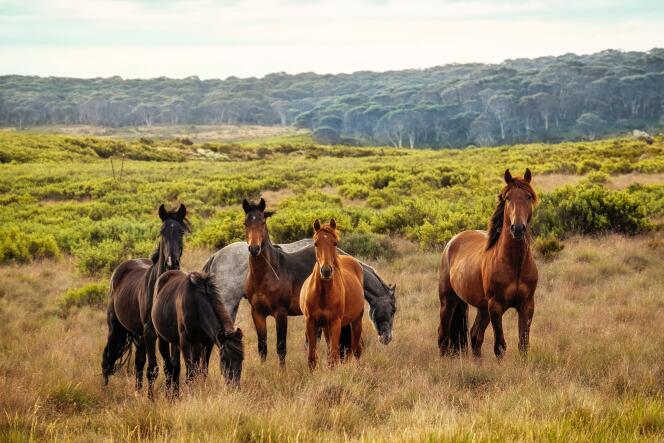LETTER FROM SYDNEY
Australia has never hesitated to use major means to protect its unique ecosystems in the world from invasive exogenous species, even if it meant sending professional shooters aboard helicopters to eliminate thousands of camels, pigs and even animals. deer. With one exception. In Kosciuszko National Park in New South Wales, wild horses were relatively protected for two decades in the name of their cultural heritage despite protests from scientists and conservationists.
On Friday October 27, the local government finally approved the resumption of their aerial culling to preserve endemic fauna and flora. But the supporters of these equines nicknamed “brumbies”, descendants of the horses who arrived from England with the first settlers in 1788, before returning to the wild, do not plan to give up their arms in this battle of cultures which has not finished shaking up the south-east of the continent.
“They deserve better than to be left, dying, riddled with bullets,” declared in particular, shortly after the announcement, Jill Pickering, president of the Australian Brumbie Alliance, who recalls, on her website, that these animals “iconic” from the country, “gave their name to rugby teams, military units, appear on bank notes and (…) were also highlighted at the opening of the Sydney Olympic Games ».
“White imprint on the landscape”
In the Australian Alps, where Kosciuszko National Park is located, some 500 kilometers southwest of Sydney, settlers used these horses for transportation, rounding up livestock and other tasks essential to life in these remote regions. Symbolizing freedom, independence and tenacity in the face of an often hostile environment, brumbies are part of the Australian mythology ofoutback − the hinterland − and have been celebrated in literature and local folklore, as in the poem The Man from Snowy River by Banjo Paterson, one of the country’s greatest writers.
“For part of the population, these horses are a reminder of the time when English settlers exploited and enriched themselves from the land. They represent Australians of European descent taming the country. It is about the imprint of white people on the landscape. We face a battle for the soul of Australia between postcolonial and precolonial visions,” analysis Anthony Sharwood, author of the book The Brumby Wars (“The Brumbie Wars”, Hachette Australia, 2021, untranslated).
You have 60% of this article left to read. The rest is reserved for subscribers.
